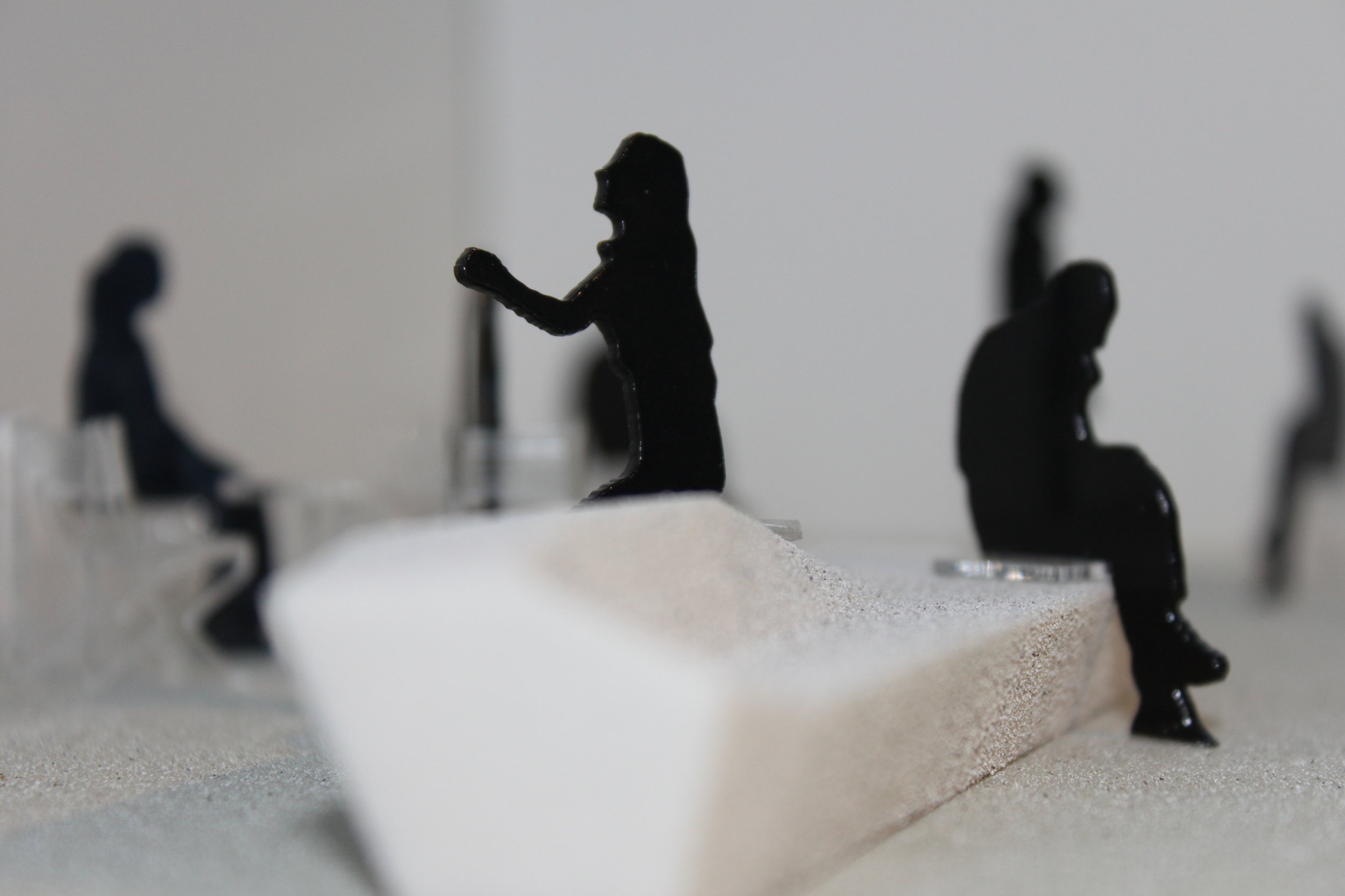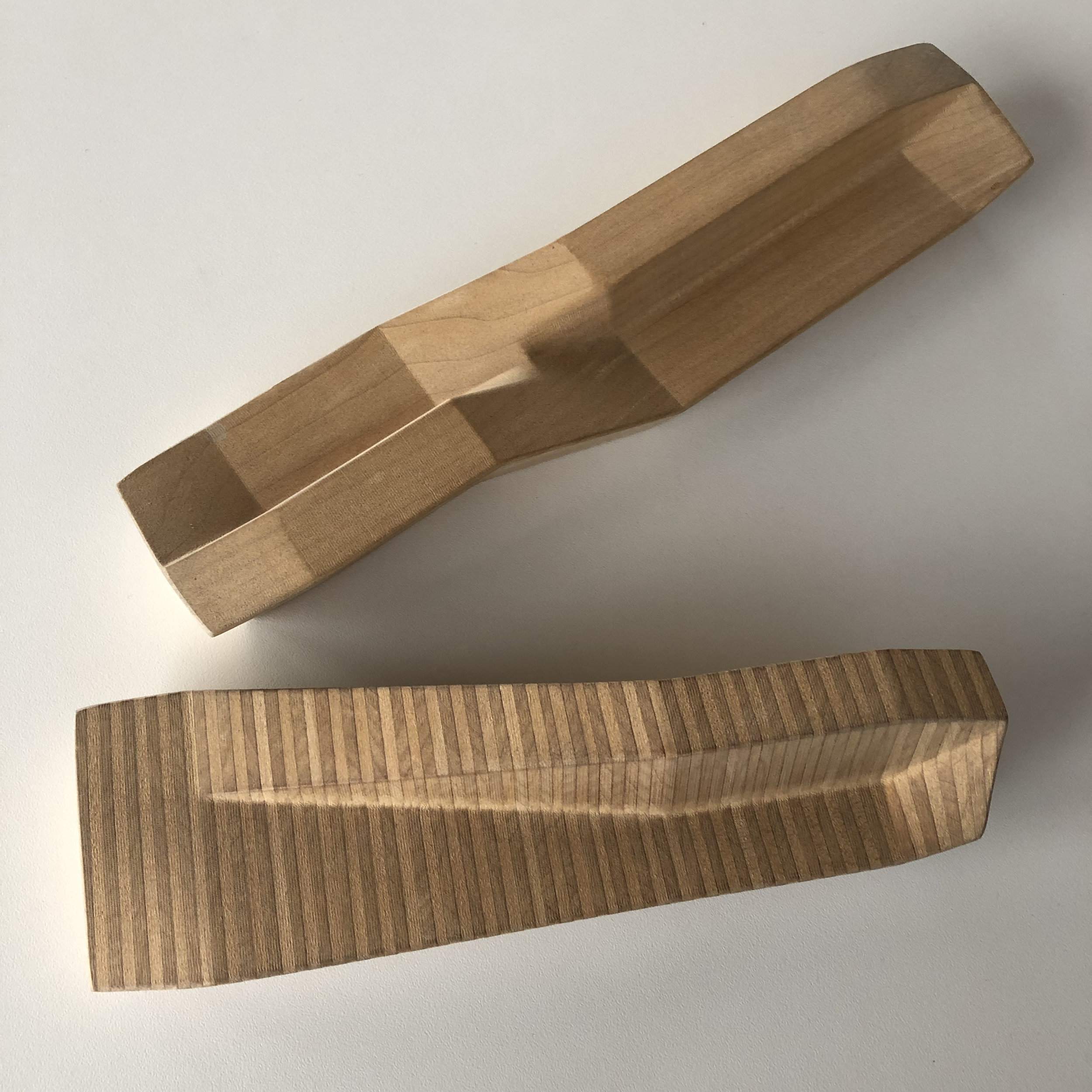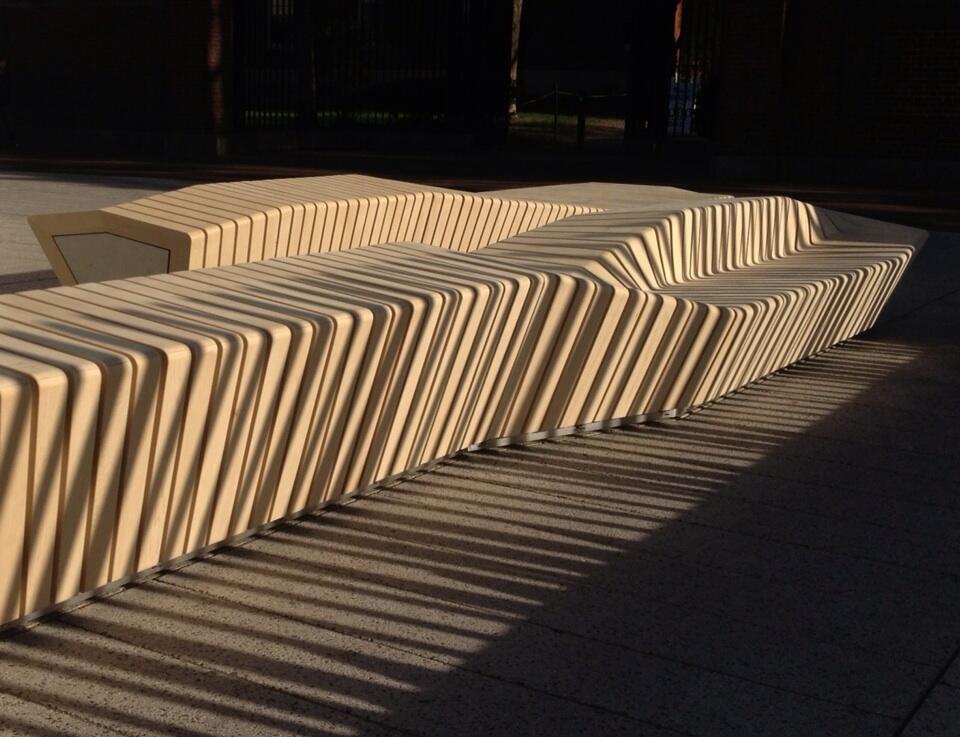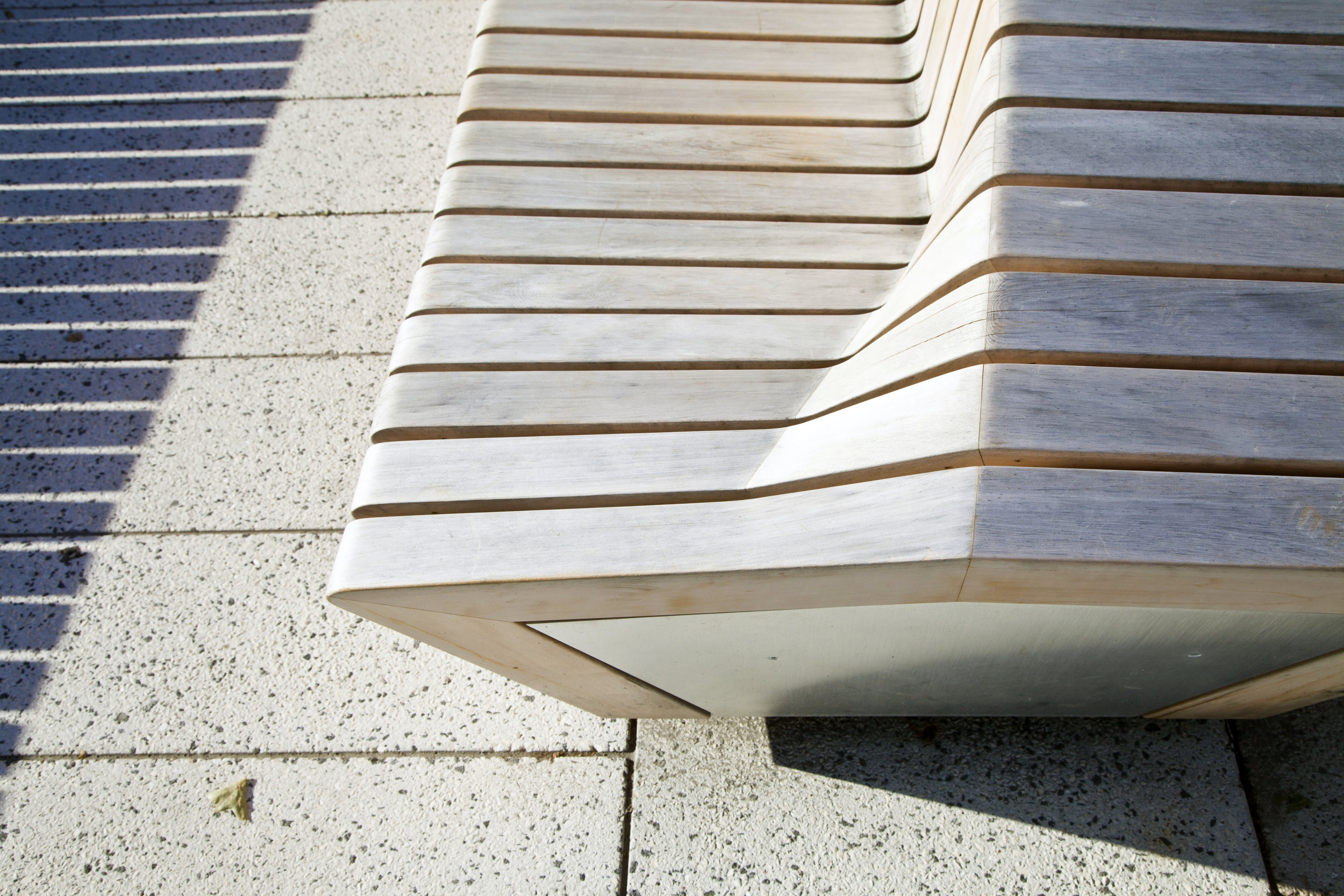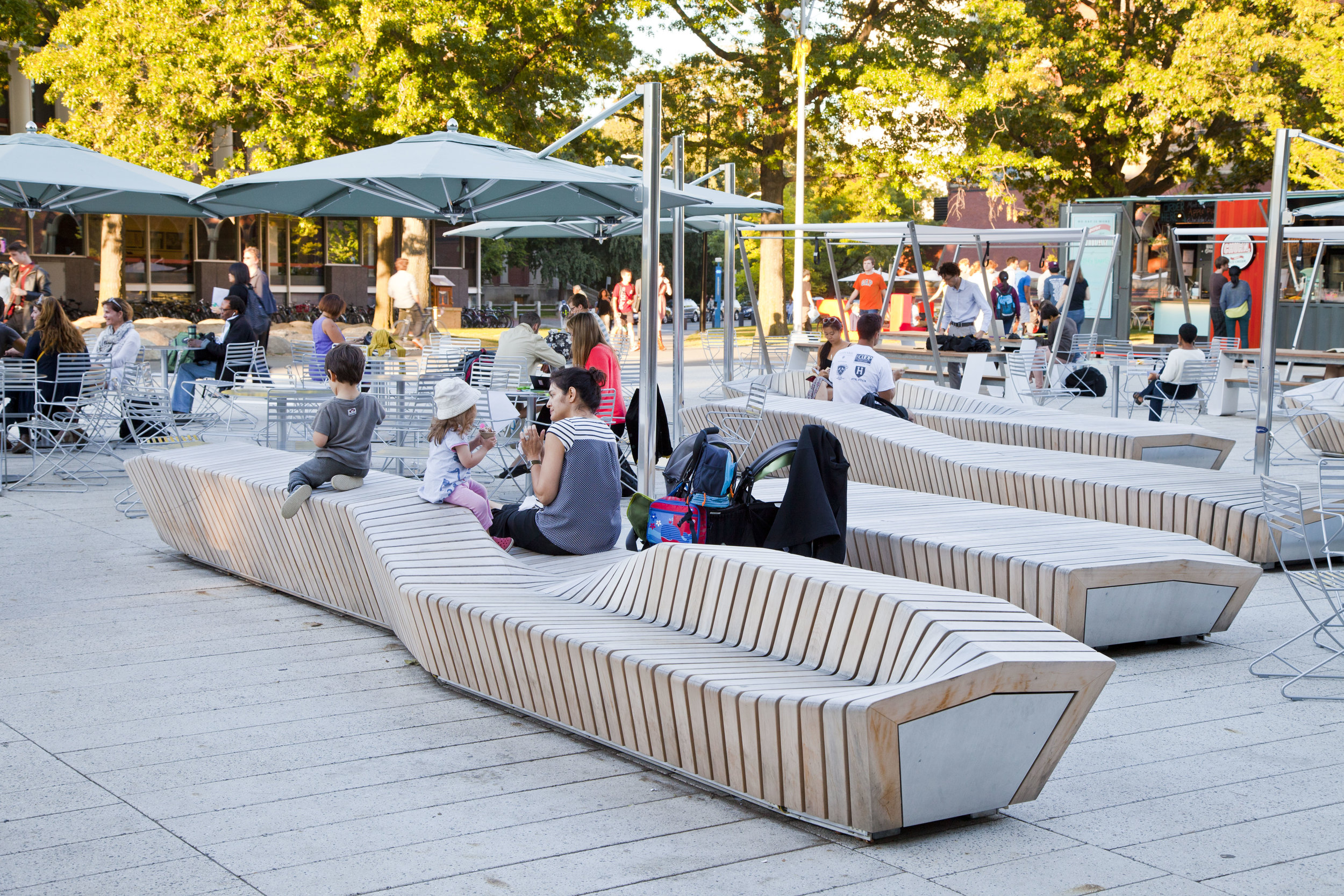Harvard University Plaza custom designed benches.
Landscape practice is often centered on ecological and environmental concerns that explore the dynamic, operational, and even physical aspects of ecological systems as a starting point for generating design. But new software technologies have brought exciting generative modeling tools into design practice that allow for a new generation of techniques and fabrication technologies that can play a significant role in shaping design in exciting new ways.
The responsiveness, flexibility, and adaptability inherent in complex systems ecology can be mimicked through generative modeling tools—allowing for dynamic multiplicity and differentiation.
These new modeling techniques, which can be utilized for design inquiry as well as to ultimately generate physical form, allow for an increasing complexity of inputs to the modeling process, producing a multiplication of possibilities that each respond to a slightly different set of priorities or agendas. What does that mean for design? In the case of the benches at Harvard Plaza, it meant the ability to customize seating that is better adapted to different body sizes and body types—or simply offers choice to suit one’s mood.
At the scale of the human body, recent technology allows for the translation of modeling principles and methods into fabrication and construction processes for furnishings and elements, allowing for the generation of non-standardized and non-repetitive units that better serve diverse body types and shapes and differing agendas for how to use public space.
Up until recently, the simple bench had been standardized, in part due to advances in industrial manufacturing processes that found efficiencies in the production of repetitive parts and assemblies. The result was that the act of sitting, hanging out, slouching, etc. had all been simplified and standardized into a typical, mass-produced bench whose formal profile was consistent and was geared toward an average human body. While the body is exceptionally versatile and adaptive—and can make a seat out of a wide range of objects (tree stumps, walls, barrels, logs, etc.)—generative and associative modeling software offer opportunities to customize seating that is better adapted to different body sizes and body types—or preferred ways of seating—while maintaining production efficiencies through evolutions in digital design, fabrication, and production techniques.
In the case of Stoss’ Harvard University Plaza benches, the key was to develop prototypes of different sitting profiles—tuned specifically to different body types and different sitting or lounging positions—and script the software to loft or transition between two different profiles. In this way, a bench could begin with 3-5 different profile positions, as did the benches at the Harvard Plaza, but result in an easily reproducible bench, created from CNC machines at the fabricator’s shop, that accommodate over a dozen different sitting positions or scales.
When this technique was utilized with different starting profiles for 5 unique custom benches, the result is a plethora of choices for how one wishes to sit in public: alone or in groups, cross legged or straight upright, lounging or lying down completely, or with a friend on one’s lap. At Harvard, the overall form is assembled from a series of Alaskan Yellow Cedar “ribs,” mounted to a steel frame; if one rib is damaged during snow removal or the like, the rib number can be retrieved from the digital file and an identical replacement piece fabricated for re-installation. This is still a process that allows for replicability and efficient production, but is better tuned to the body and choice.
Chris Reed is the Founding Director of Stoss Landscape Urbanism and is Professor in Practice of Landscape Architecture at the Harvard University Graduate School of Design. This article was adapted from an article entry by Chris Reed in Computation in Landscape Architecture, edited by Bradley Cantrell and Adam Mekies.


